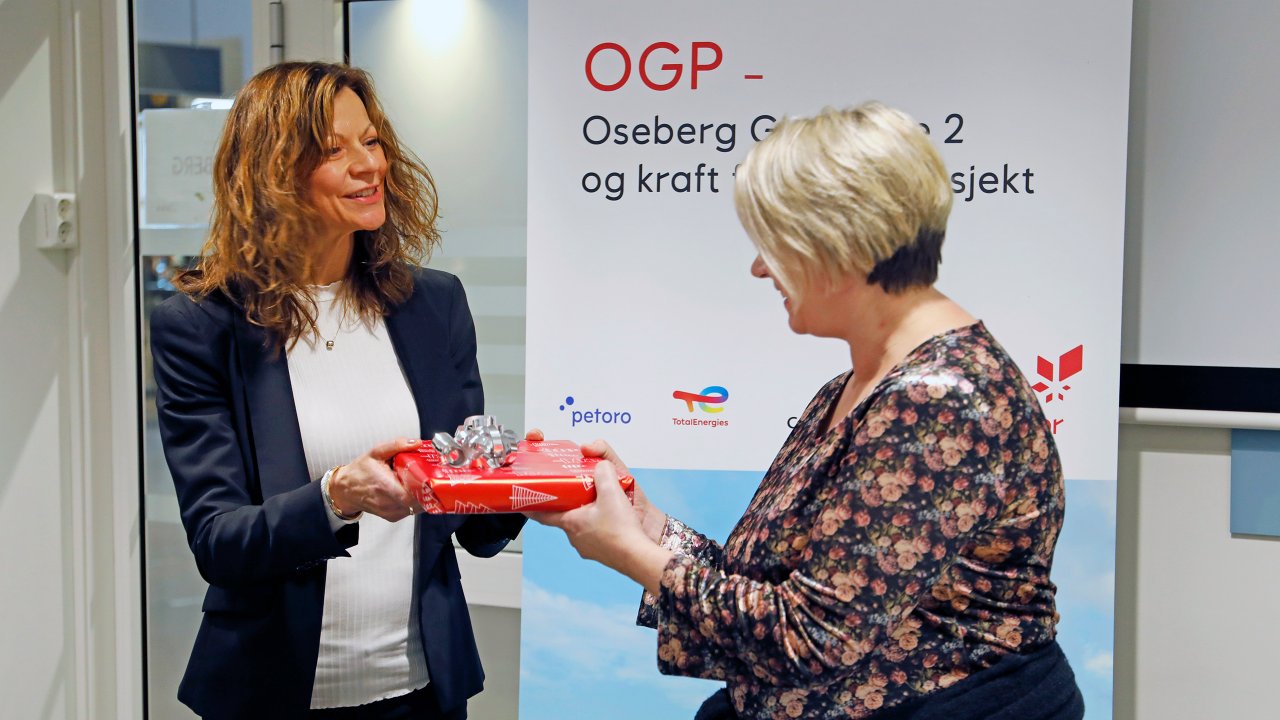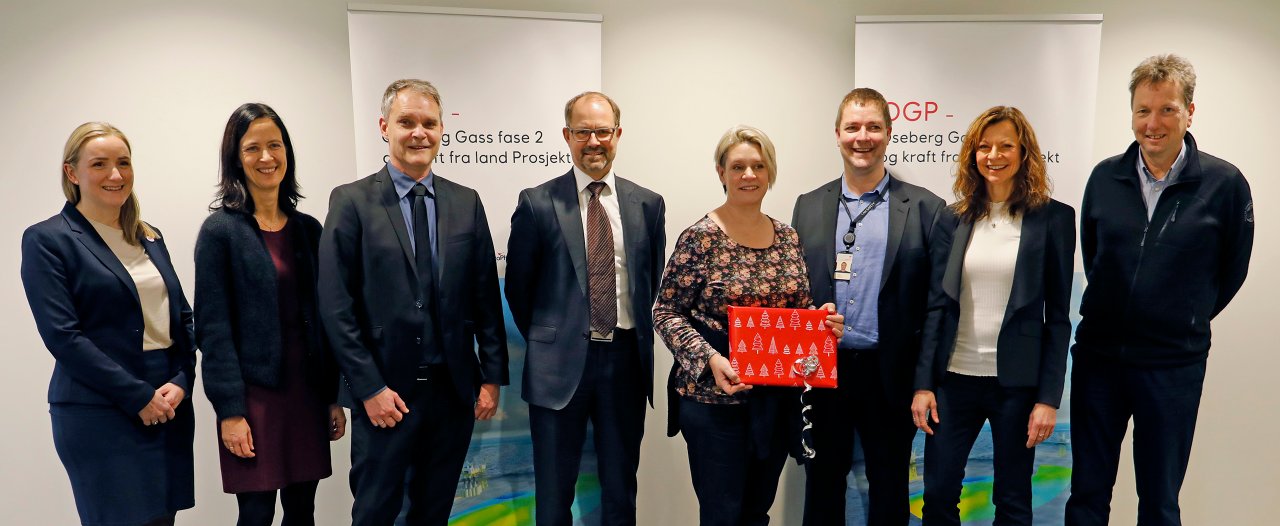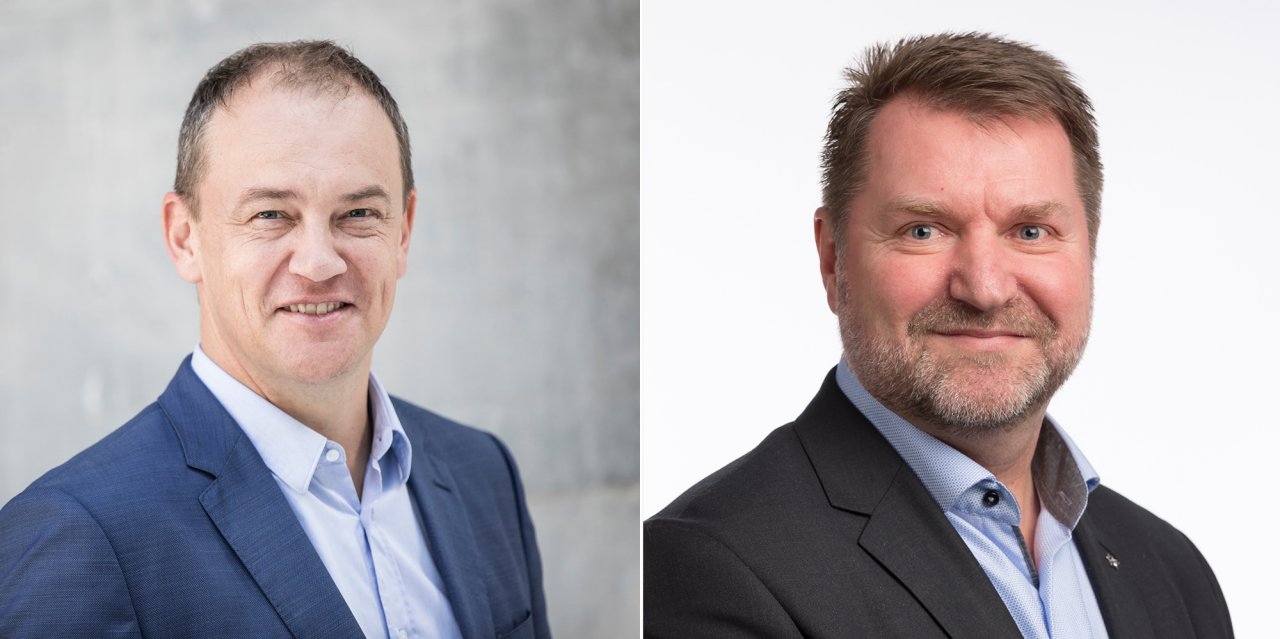The Oseberg Area Unit partners will reduce CO2 emissions from the Oseberg Field Center and the Oseberg South platform while increasing Oseberg gas production. An amended plan for development and operation (PDO) has been submitted to the minister of petroleum and energy Marte Mjøs Persen.
Oseberg will be developed from primarily being an oil field to becoming a substantial gas producer with large remaining gas resources.
Two new compressors will be installed to boost recoverable gas volumes and the Oseberg Field Centre and Oseberg South platform will be partially electrified.
 Cecilie Aarskog Bekkeheien (left) from Equinor delivering the amended plan for development and operation of the Oseberg field to Marte Mjøs Persen, Minister of Petroleum and Energy. (Photo: Arne Reidar Mortensen / Equinor ASA)
Cecilie Aarskog Bekkeheien (left) from Equinor delivering the amended plan for development and operation of the Oseberg field to Marte Mjøs Persen, Minister of Petroleum and Energy. (Photo: Arne Reidar Mortensen / Equinor ASA)
“It is important to Equinor and the Oseberg partners to produce oil and gas with the lowest possible emission level. This investment decision allows us to increase production of Oseberg gas considerably in the future, while reducing CO2 emissions by an estimated 320,000 tonnes per year. During the project planning we have received good support from and cooperated closely with our partners. We are now entering the execution phase together with highly qualified suppliers,” says Geir Tungesvik, Equinor’s senior vice president for project development. Plans call for start-up of the new facility in 2026.
The work to be carried out on the platforms is extensive as three big modules totaling 3400 tonnes will be installed. Rebuilding of the Oseberg Field Centre will take four years and give work to 70 people. On Oseberg South, 40 people will be occupied for one year. This will be done while the plants are in full operation and will require close and good cooperation between all the different players.
 Cecilie Point Pedersen (left), TotalEnergies, Wenche Tjelta Johansen, The Norwegian Petroleum Directorate, Stein Wolden, ConocoPhillips, Kjell Morrisbak-Lund, Petoro, Marte Mjøs Persen, Minister of Petroleum and Energy and from Equinor Arild Gjerstad, Cecilie Aarskog Bekkeheien and Kjetil Hove. (Photo: Arne Reidar Mortensen / Equinor ASA)
Cecilie Point Pedersen (left), TotalEnergies, Wenche Tjelta Johansen, The Norwegian Petroleum Directorate, Stein Wolden, ConocoPhillips, Kjell Morrisbak-Lund, Petoro, Marte Mjøs Persen, Minister of Petroleum and Energy and from Equinor Arild Gjerstad, Cecilie Aarskog Bekkeheien and Kjetil Hove. (Photo: Arne Reidar Mortensen / Equinor ASA)
Oseberg – a giant on the Norwegian continental shelf (NCS)
Oseberg is the third largest oil producer ever on the NCS. When Oseberg came on stream, it was expected to produce around one billion barrels of oil. Today we expect the field to produce a total of around 3.2 billion barrels of oil. Oil production is in the tail phase, but 60 per cent of the gas resources are still in the ground. When it comes to gas, Oseberg is also one of the major fields, only Troll and Snøhvit have more remaining gas resources on the NCS.
“With this investment we open a new chapter of the story of Oseberg, which is about to become one of the main Norwegian gas producers. We expect Oseberg to produce more than 100 billion sm3 of gas towards 2040. In terms of energy, the annual gas export from Oseberg will equal a quarter off all Norwegian hydropower,” says Geir Sørtveit, Equinor’s senior vice president for exploration and production west.
For the year 2020, Oseberg emissions totaled around one million tonnes of CO2. Since 2010, emissions at Oseberg have been reduced by around 15 percent, and there is an ambition of further reducing emissions by 50-70 per cent by 2030. The new compressors and electrification from shore is vital to reach this ambition.
 Geir Sørtveit (left), Equinor’s senior vice president for exploration and production west, and Geir Tungesvik, Equinor’s senior vice president for project development.
Geir Sørtveit (left), Equinor’s senior vice president for exploration and production west, and Geir Tungesvik, Equinor’s senior vice president for project development.
“If the world is to reach its net zero emission goal, we must remove emission sources, also on the NCS. Electrification is an effective climate action as it involves large and swift emission cuts. The solution adopted gives a cut in emissions of about 50 per cent from the Oseberg Field Centre and the Oseberg South platform, representing an important move to continue the long-term value creation from the Oseberg area,” continues Sørtveit.
In March 2021, Equinor obtained a license from the Ministry of Petroleum and Energy (MPE) to construct, own and operate necessary electrical facilities to provide the Oseberg Field Centre and the Oseberg South platform with power from shore. Oseberg will have a total power demand of up to 105 MW. The project will also prepare for any full electrification of the installations in the future.


